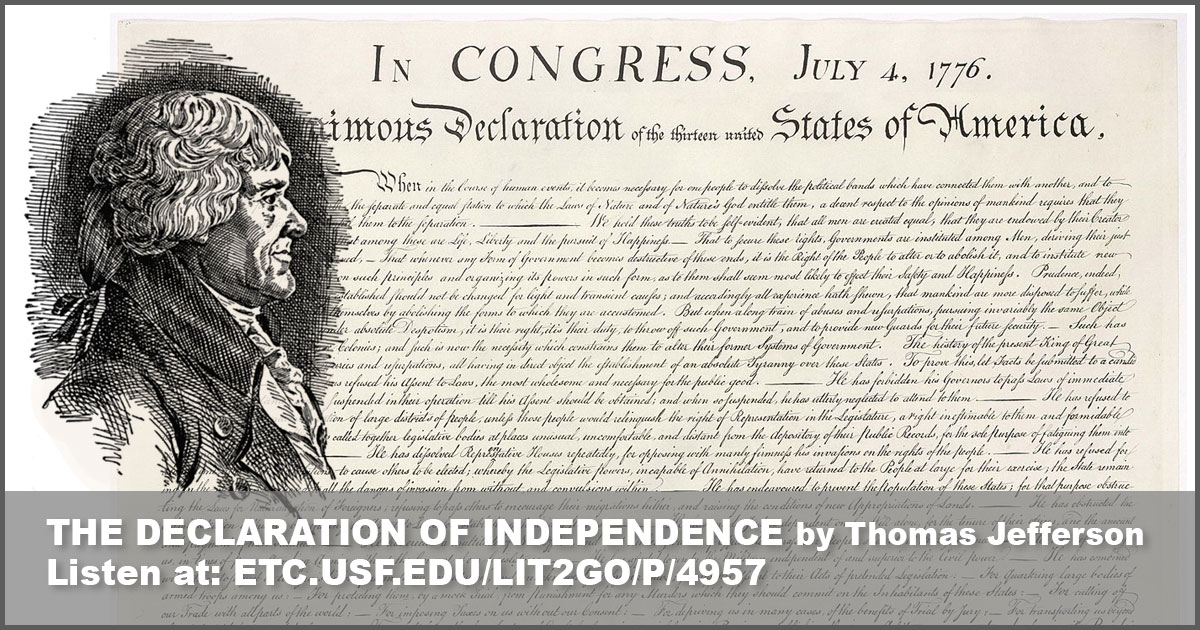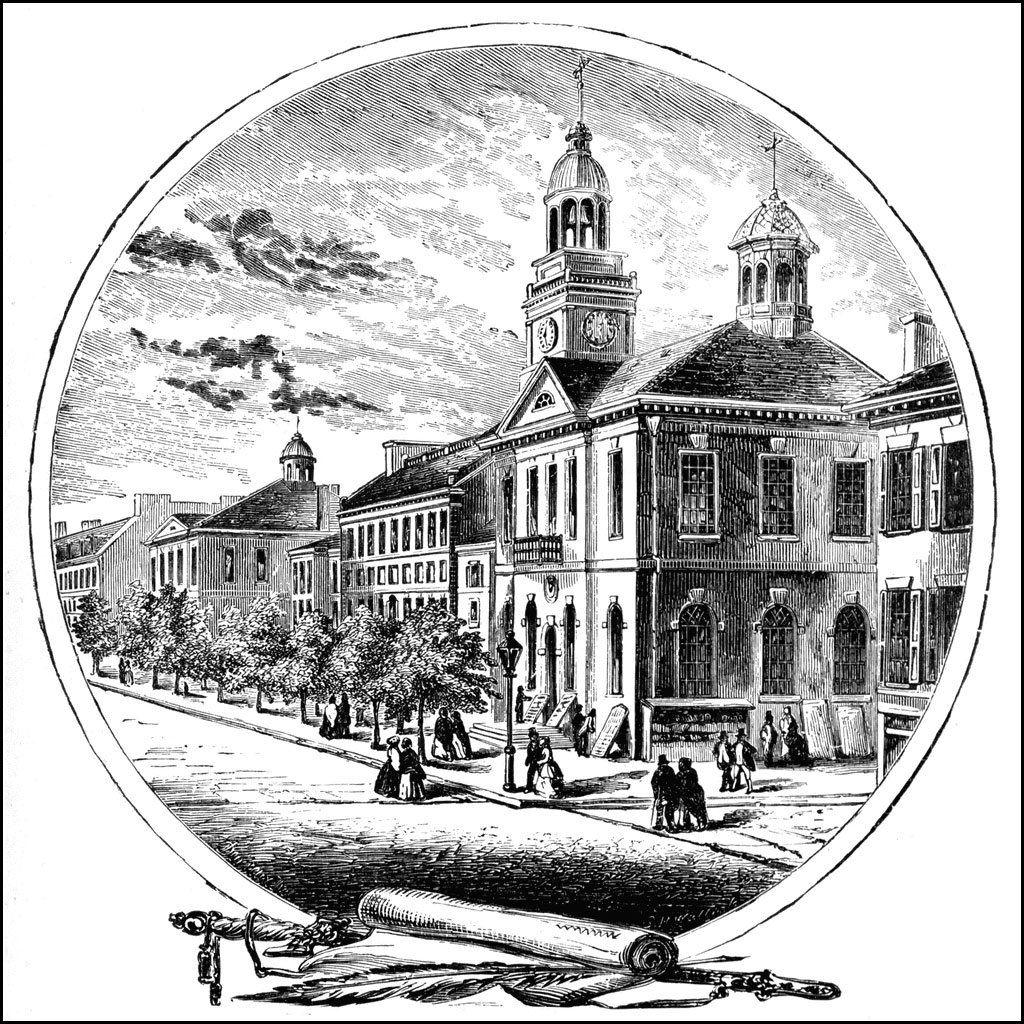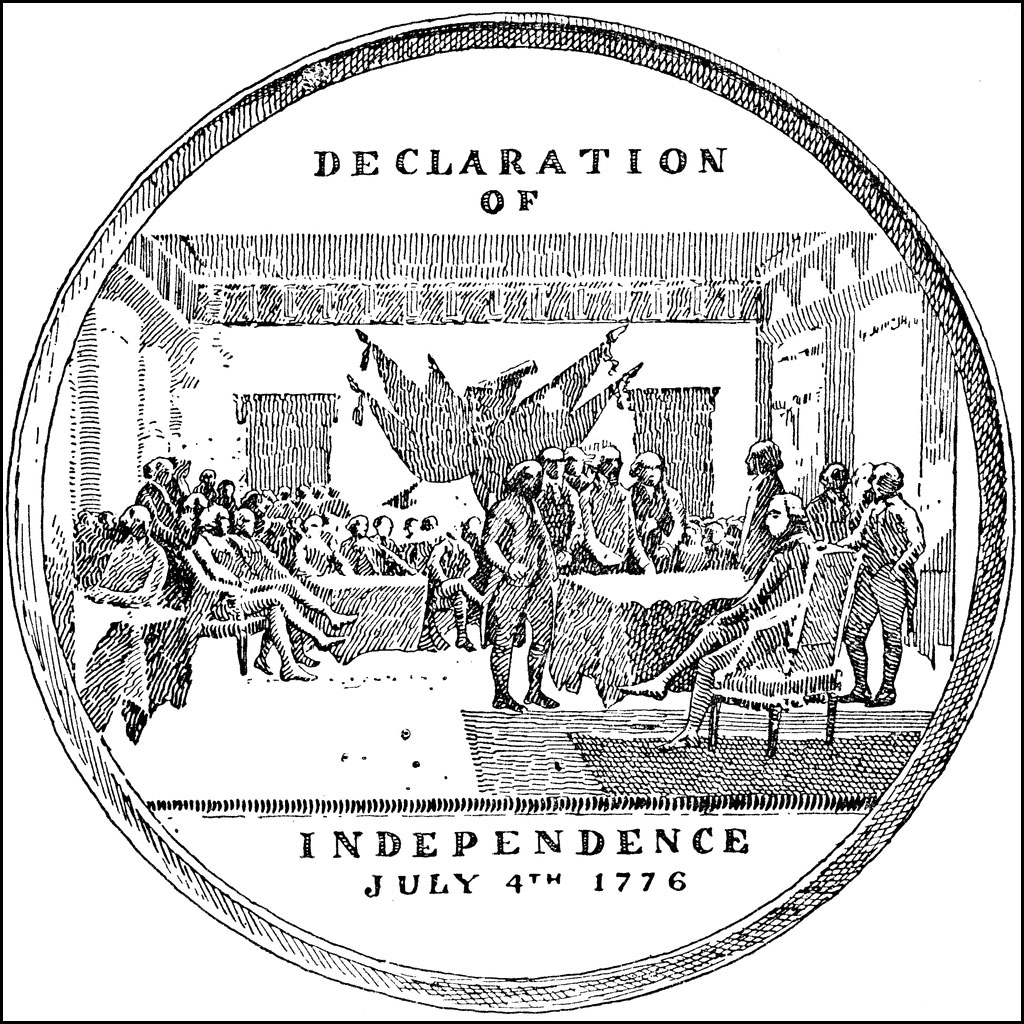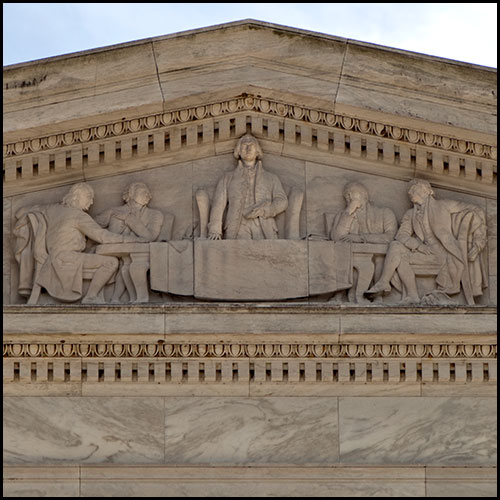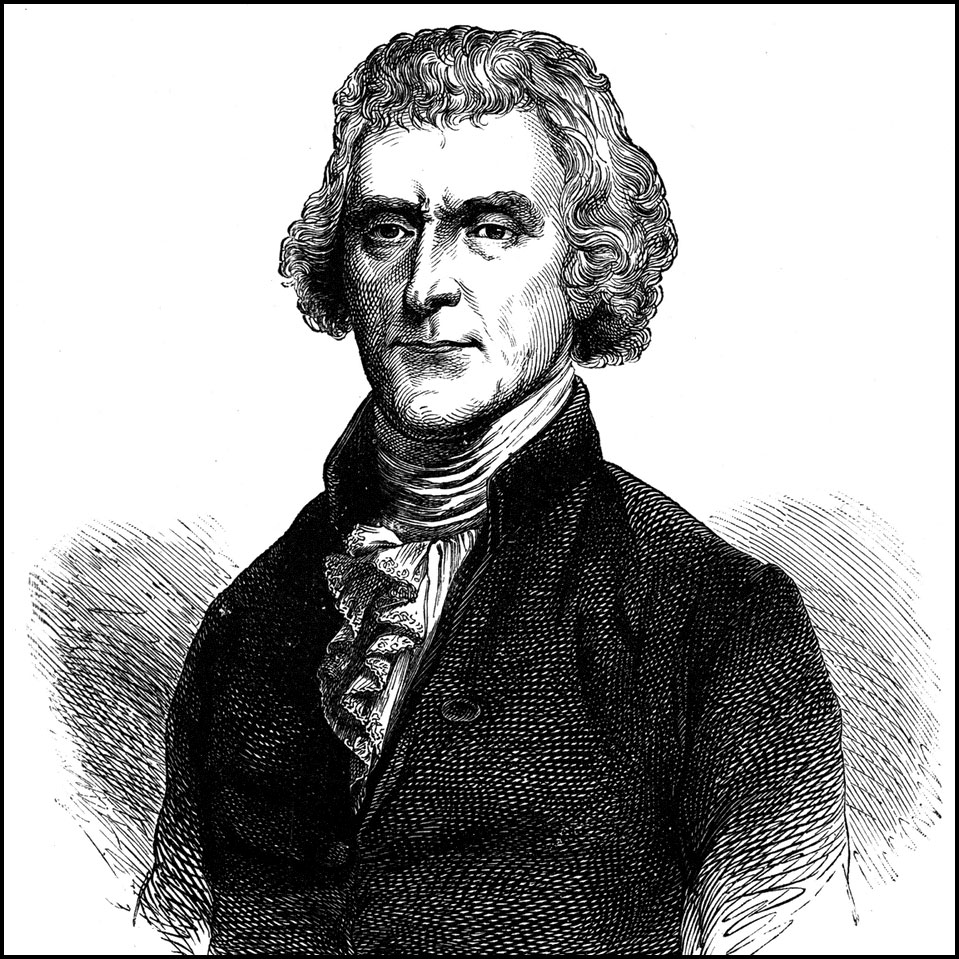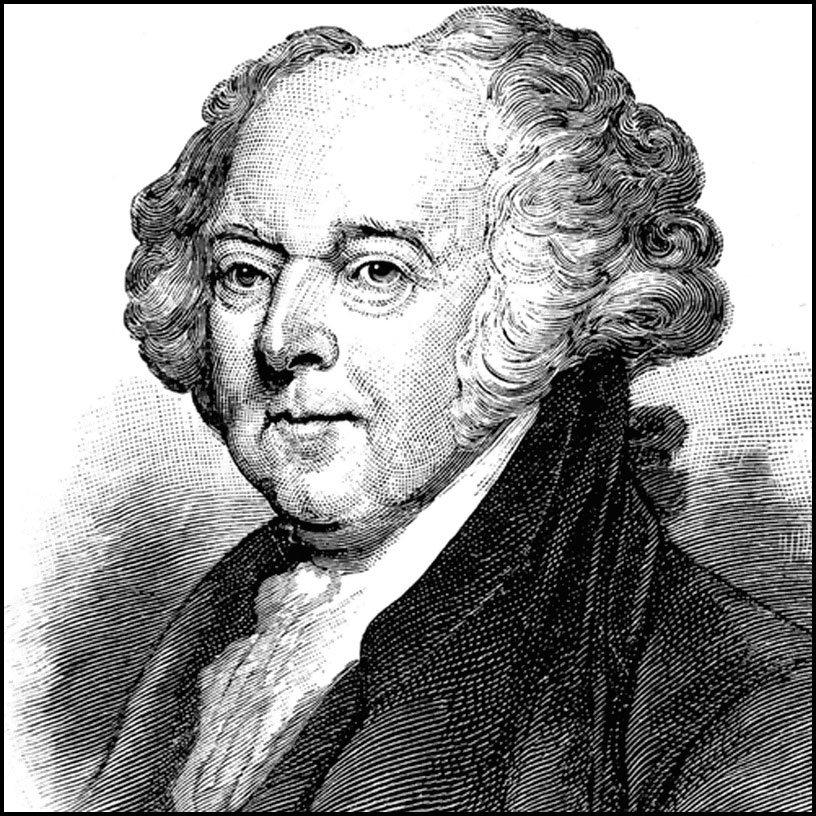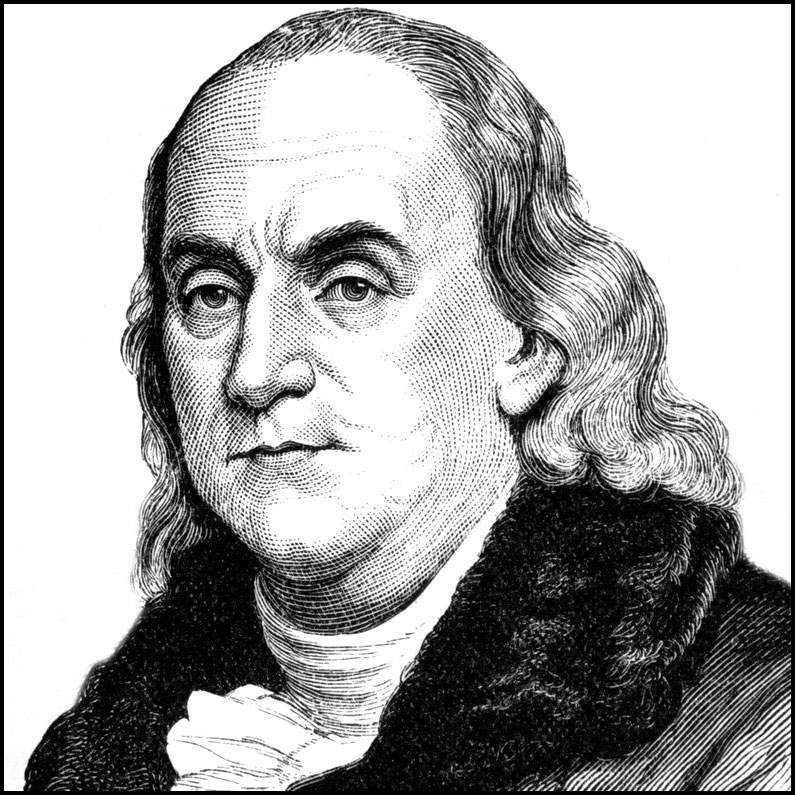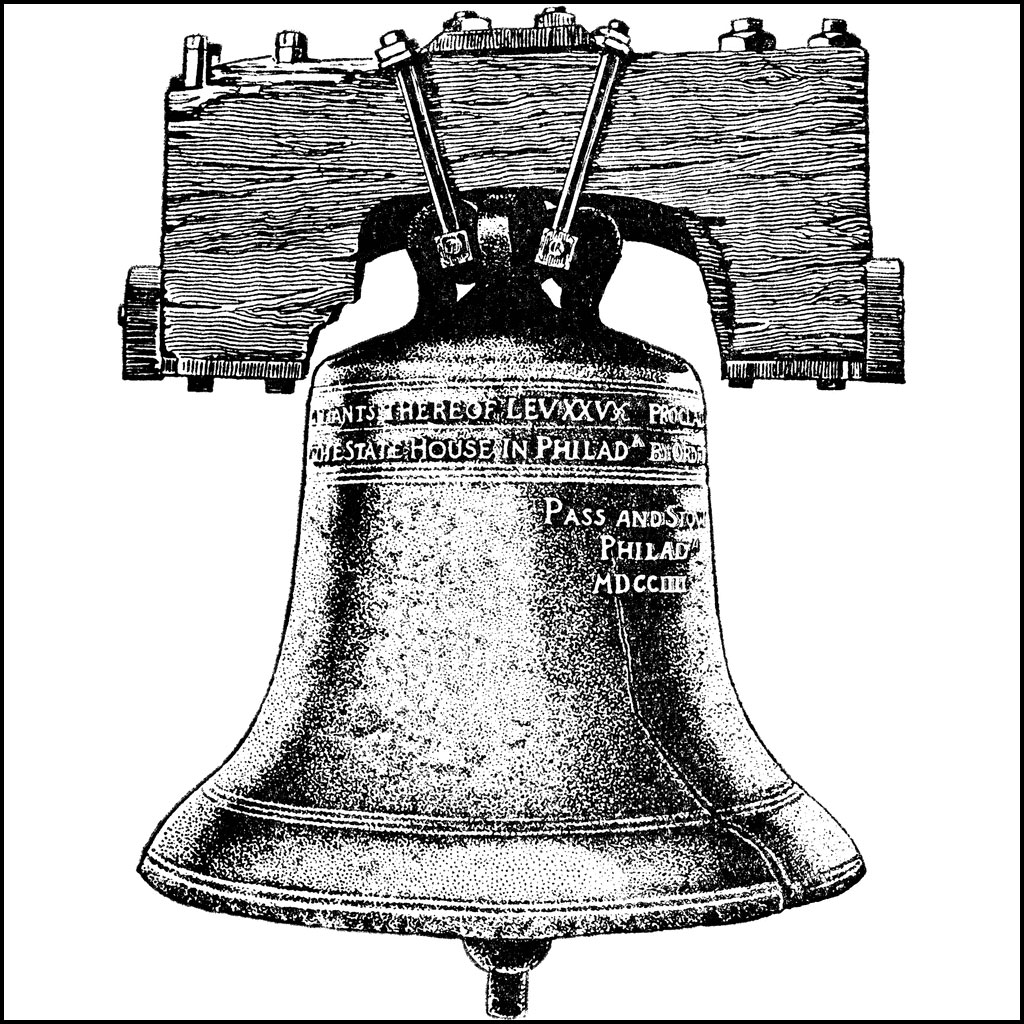July 4: Independence Day
On this day in 1776, the Continental Congress adopted the Declaration of Independence declaring the thirteen colonies a new nation, no longer a part of the British Empire. The Declaration followed the vote for a resolution of independence two days earlier.
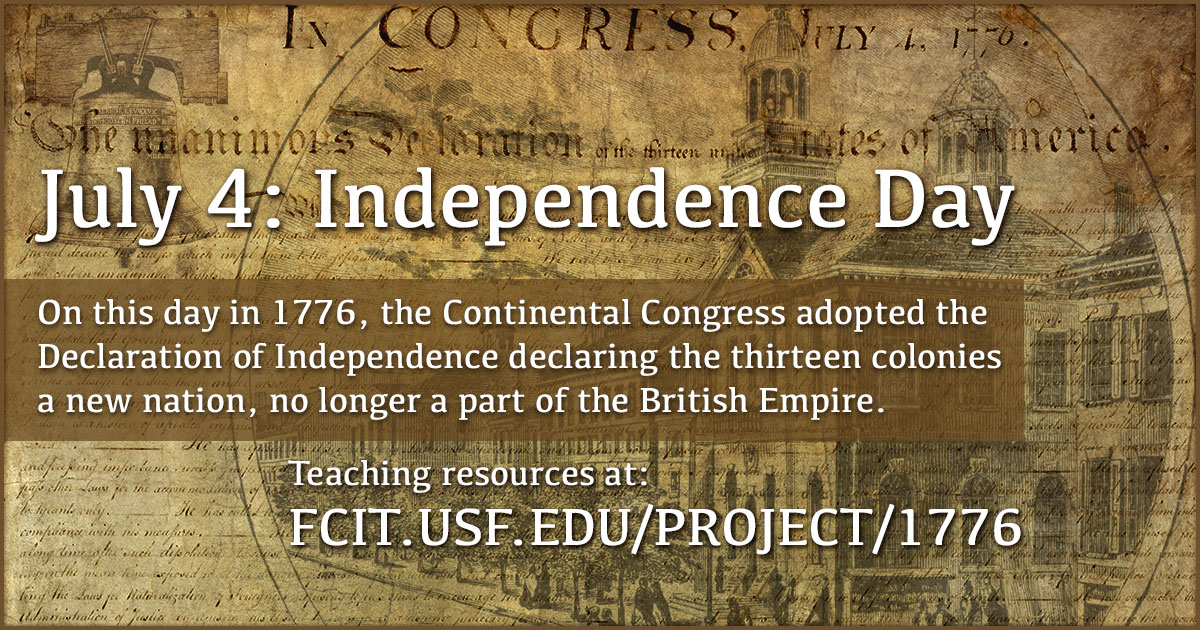
Independence Day Banner
Use this banner on social media to share our collection of Independence Day teaching resources.
Listen to the Declaration of Independence on Lit2Go
In the Declaration, Thomas Jefferson outlines the despot-like behavior of the King of Great Britain and declares that the United States of America will no longer recognize British rule. Lit2Go audio duration: 10 minutes, 20 seconds. Also available as a five-page PDF. Reading level: 12.0. Word count: 1,340.
Indepenence Hall
Indepenence Hall, Philidelphia, where the Declaration of Indepence was signed. Illustrationsfrom the ClipArt ETC website.
Interior of Independence Hall
The interior of Independence Hall in Philadelphia where the Declaration of Independence was signed. Illustration from the ClipArt ETC website.
Table and Chair
The table and chair used at the signing of the Declaration of Independence. Illustration from the ClipArt ETC website.
Commemorative Medal
A medal with a depiction of the signing of the Declaration of Independence. Illustration from the ClipArt ETC website.
Committee of Five Relief Sculpture
Pediment sculpture from the Jefferson Memorial in Washington, DC. The committee that drafted the Declaration of Independence included Thomas Jefferson, John Adams, Benjamin Franklin, Roger Sherman, and Roger Livingston. Photo from the ClipPix ETC website.
Thomas Jefferson
Jefferson was the primary author among the five contributors. He was a representative of Virginia at the time and later became the third President of the United States. Illustration from the ClipArt ETC website.
John Adams
John Adams was a representative from Massachusetts and later became the second President of the United States. Illustration from the ClipArt ETC website.
Dr. Benjamin Franklin
Ben Franklin was a representative of Pennsylvania and became the first US minister to France. Illustration from the ClipArt ETC website.
John Hancock
John Hancock was President of the Second Continental Congress at the time of the signing of the Declaration of Independence. His large signature on the document is so well known that “John Hancock” has become a synonym for signature. Illustration from the ClipArt ETC website.
Liberty Bell
The Liberty Bell rang from the steeple of Independence Hall to alert the public to proclamations. As such, it probably was not rung on July 4, but may have been rung on July 8 for the public reading of the Declaration. Illustration from the ClipArt ETC website.

